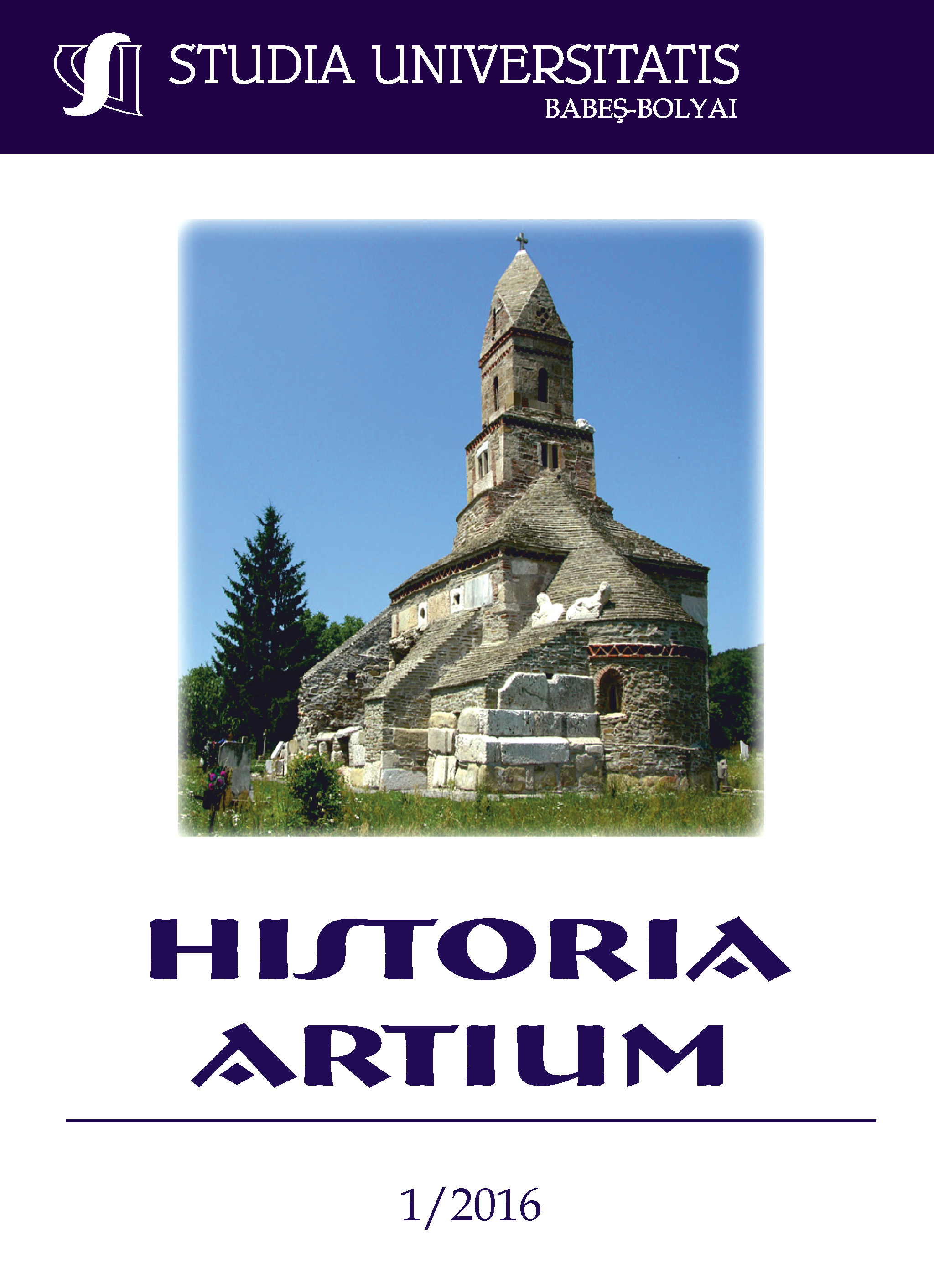OBSERVAŢII ASUPRA PICTURII DE ALTAR DIN BISERICI ARMEANO – CATOLICE TRANSILVANE
Keywords:
Transylvania, baroque, painting, Armenian-Catholic Churches, The Holy Trinity, The Stoning of Saint Stephen, Venice, Dumbrăveni, Gherla .Abstract
Some Remarks Regarding the Altar Painting in Armenian-Catholic Churches in Transylvania. The present study is an in-depth iconographic research of religious subjects preferred by the Armenian clergy and church-going patrons in Transylvania who, in 1689, as a result of the firm initiative of the Bishop of Aldala, Oxendie Verzerescu († 1715) took to the Catholic faith. From then on we can witness the astonishing ability of this group in adopting the new Catholic ways (a new baroque and neoclassical religious architecture, the complex and varied suppelectiles with altars, stalls, confessionals, wardrobes in the sacristies, tabernacles and baptismal fonts all made according to the new stylistic exigencies), including a painting done in accordance to the newly adopted cult, which substituted the superb oriental miniatures in the Armenian religious books of the medieval period (Homiliarium, Martyrologium, Codex, Gospel). Documents from the 18th century mention a number of iconographic themes and the cult of saints, specific to Armenian tradition and historic sensibilities: The Virgin and Child (with its iconographic variants Mariazell, Tyrnavia, Nicula, Máriapócs, Şumuleu), The Holy Trinity, St. Gregory the Illuminator, St. Stephen Protomartyr, St. Joseph, The Holy Family with Saints Joachim and Anna, and Infant Mary, St. Anthony the Hermit and Saint Paul the Hermit, Baptism of King Trdat/ Tiridates III, St. Elisabeth’s Charity etc. The old paintings are present even today in the main and side altars of the Armenian Catholic churches in Dumbrăveni, Frumoasa, Gheorghieni, Gherla or in the altars of several churches of the Franciscan and Piarist orders in Făgăraş, Dej, Sibiu, Odorheiu Secuiesc and Sighetu Marmaţiei for which Armenian believers had made important offering. The research proper is focused mainly on the works having as topic The Holy Trinity with Archangels Michael, Gabriel and Raphael; the old oil painting in the main altar of the great Armenian-Catholic church in Gherla, a work existing by the sixth decade of the 18th century, a monumental work (639×286cm) which has some similarities stylistically and terms of composition with the productions of Venetian painting workshops present in some of the churches of the Transylvanian Armenians or with the Austrian masters educated in Italy, retaining the specificity of the late baroque permeated by the rococo (Giovanni Battista Tiepolo, Sebastiano Ricci, Giovanni Battista Piazzetta, Antoni Pellegrini, Giovanni Battista Pittoni, Hubert Maurer, Johann Michael Rottmayr, Michelangelo Unterberger-Cavalese, etc.). In the case of the second work, The Stoning of Saint Stephen, a similar pattern is followed, from the remotest iconographic model of the series made by Giulio Romano in 1521 for the church of St. Stephen in Genoa, a work with an elaborate and monumental mise en scène much loved not only by the young Italian masters who knew and copied the work (Andrea and Ottavia Semino, Luca Cambiaso, Bernardo Castello and Giovanni Battista Paggi), but also by the next generations of painters in that country, and also French, Spanish, Flemish, German and, of course, Austrian (Viennese workshops), painters too. The side altar’s painting (Stoning of Saint Stephen) in the church Charity of Saint Elisabeth in Dumbrăveni shows the creative adaptation and remaking of the Genoese prototype and also influences received from masters of the late baroque from the Austrian empire (Paul Troger, Johann Baptist Enderle, Franz Xaver Wagenschön, Franz Anton Maulbertsch, Hubert Maurer).
Downloads
Published
How to Cite
Issue
Section
License
Copyright (c) 2016 Studia Universitatis Babeș-Bolyai Historia Artium

This work is licensed under a Creative Commons Attribution-NonCommercial-NoDerivatives 4.0 International License.






